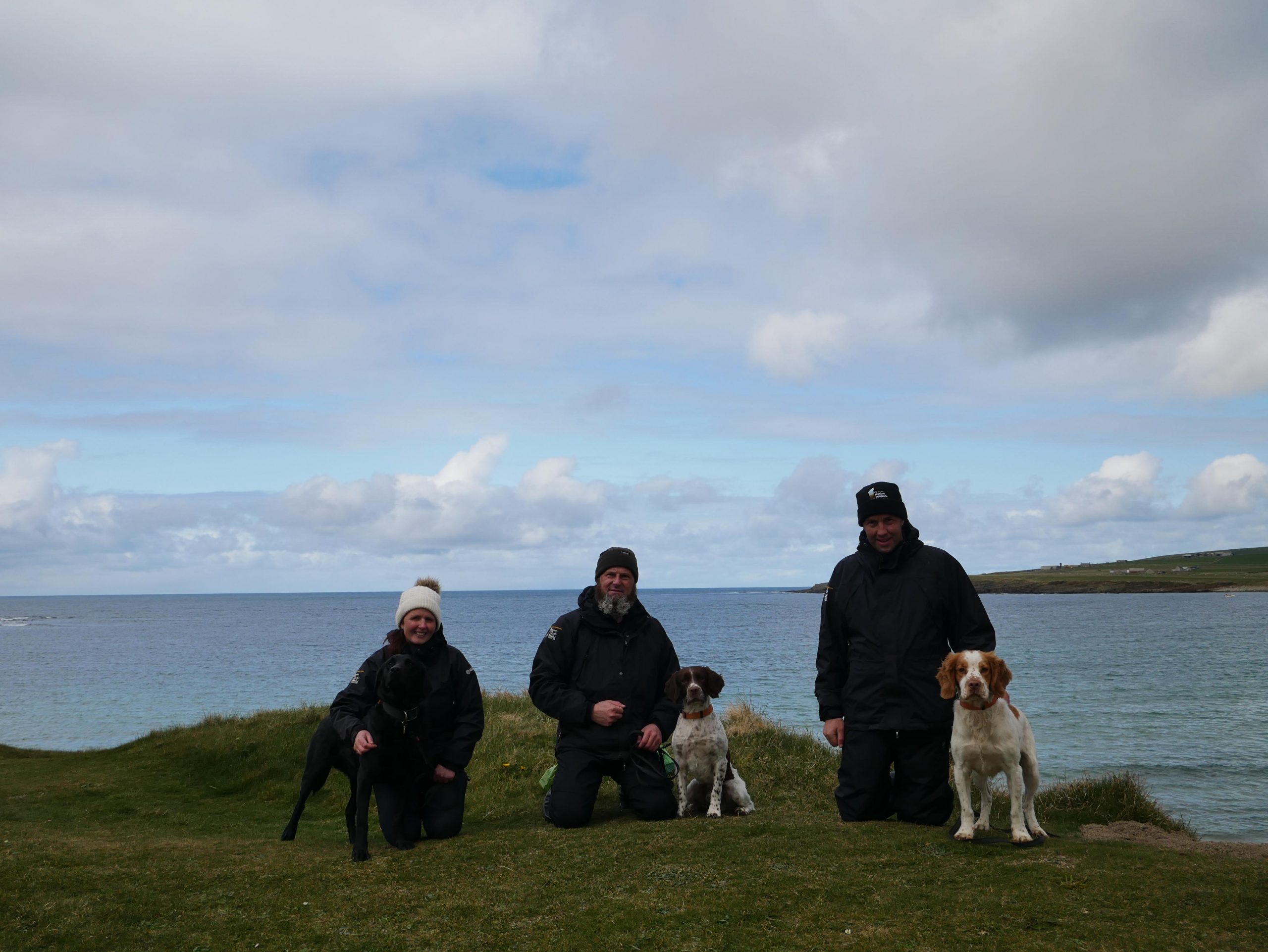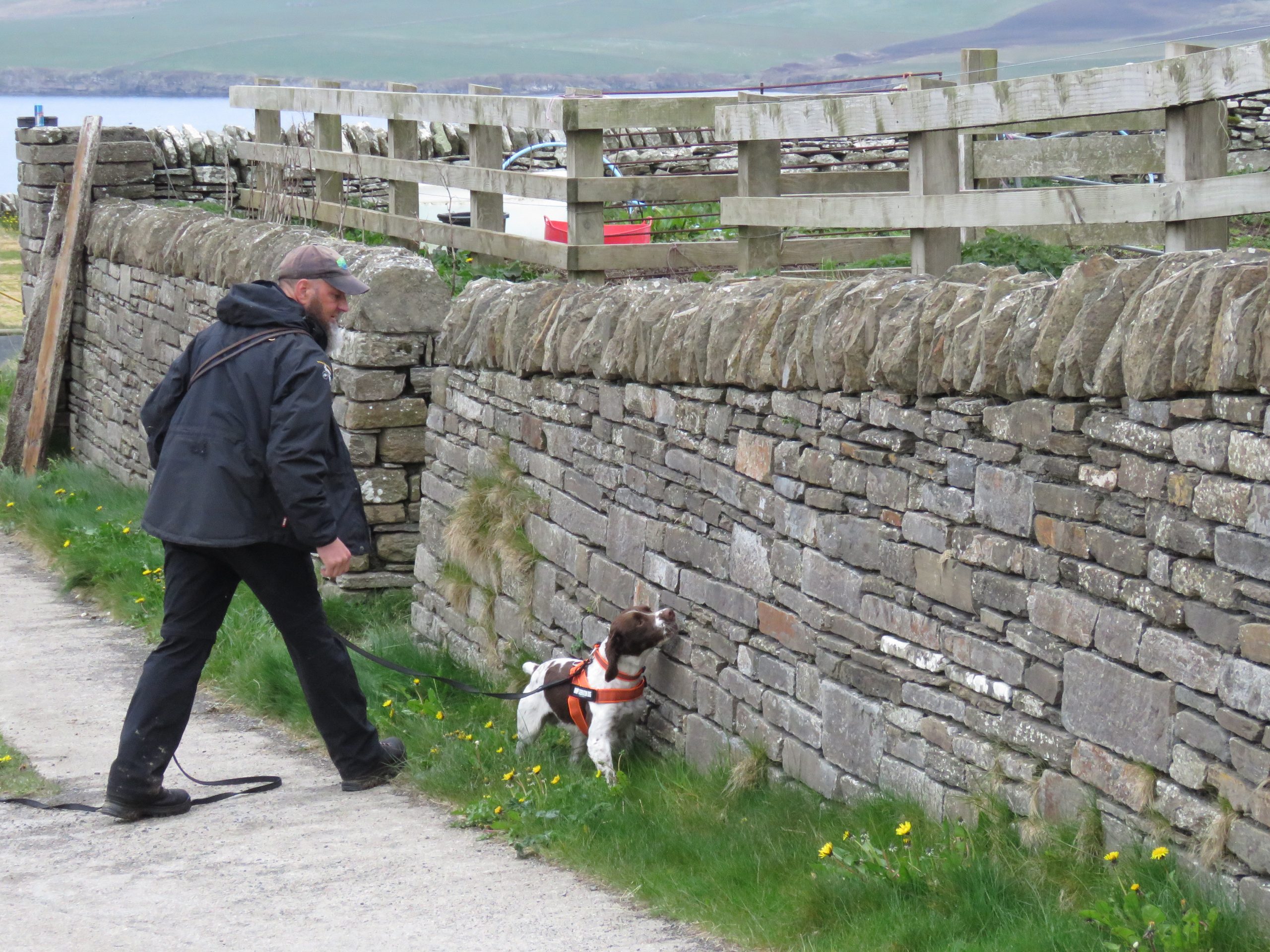THREE specially trained conservation detection dogs are the most recent team members for a project to safeguard Orkney’s native wildlife.
The trio will be using their sensitive noses to assist the world’s largest stoat eradication.
The dogs have been trained specifically for the Orkney Native Wildlife Project to indicate the scent of stoats to their handlers.
They arrived in Orkney at the end of April and have spent the last two weeks in an intensive training course designed to test their handlers’ skills.

During the course, the dogs – Scout, Thorn, and Spud – were also each matched with their new handler.
The bond between a detection dog and their handler is critical to them being an effective team and therefore the matching process is a serious part of the training.
Now, these three new pairings are ready to begin their important role in the world’s largest stoat eradication project.
Stoats are notoriously difficult to detect particularly when their populations are at low densities.

Dogs have around 300 million scent receptors in their nose and their ability to pick up scent is 40 times greater than humans.
Therefore, the canine team members will help establish the absence of stoats more efficiently and effectively than human efforts to report sightings and monitor for signs alone.
Like other detection dogs, they have been rigorously trained to the highest standards akin to those used to train drug or bomb “sniffer” dogs.
The difference is that Scout, Thorn and Spud are trained to identify signs of stoats and to indicate this to their handlers.

Grant Blackley, one of the Orkney Native Wildlife Project dog handlers,?said: “After the year long delay due to Covid19 it has been wonderful to finally meet and start bonding with the dogs.
“I have learnt a great deal from the course and look forward to adding the formal stoat detection dog handler accreditation to my experience and becoming operational in the field.”
The Orkney Native Wildlife Project, which is a partnership between RSPB Scotland, NatureScot, and Orkney Islands Council, aims to protect Orkney’s native wildlife by removing stoats, an invasive non-native predator that was first recorded in Orkney in 2010.

Stoats are native to the UK Mainland but not to Orkney, where they pose a very serious threat to Orkney’s native wildlife particularly the Orkney vole, hen harrier, short-eared owl, and other ground-nesting birds such as red-throated divers, Arctic terns and curlews for which Orkney is internationally important and upon which Orkney’s thriving wildlife tourism industry relies.
Chris Bell, Biosecurity Officer for the Orkney Native Wildlife Project, said: “Biosecurity measures are essential to prevent stoats spreading from the Orkney Mainland to other islands putting more native wildlife at risk and making the challenge to eradicate stoats even greater.
“The dogs will completely revolutionise our ability to maintain island biosecurity.”

